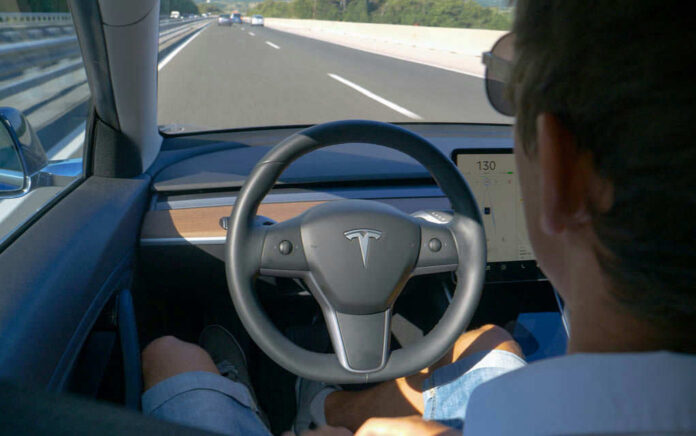
Tesla’s controversial “Mad Max” driving mode has triggered a federal investigation targeting 2.9 million vehicles just days after its rollout, raising serious questions about whether aggressive autonomous features belong on American roads.
Story Highlights
- NHTSA launches investigation into Tesla FSD after 58 complaints, 14 crashes, and 23 injuries
- “Mad Max” mode prioritizes aggressive lane changes and rapid maneuvers to maintain higher speeds
- Federal probe examines traffic violations and unsafe driving behaviors in FSD-equipped vehicles
- Tesla continues offering the controversial feature despite mounting regulatory scrutiny
Federal Safety Investigation Targets Aggressive Driving Features
The National Highway Traffic Safety Administration launched an investigation into Tesla’s Full Self-Driving system shortly after the company reintroduced its “Mad Max” mode in FSD v14.1.2. The federal probe encompasses 2.9 million FSD-equipped vehicles following 58 safety complaints that documented 14 crashes and 23 injuries. This investigation represents a direct challenge to Tesla’s push for more aggressive autonomous driving capabilities at a time when road safety should be paramount.
Reckless Programming Disguised as Innovation
Tesla’s “Mad Max” mode operates as part of a five-tier personality system designed to mimic aggressive human driving behaviors. The system prioritizes rapid lane changes and maintains higher speeds by weaving through congested traffic more aggressively than standard autonomous modes. While Tesla markets this as enhanced efficiency, the reality is programming that encourages the very driving behaviors that cause accidents and endanger families on American highways.
Pattern of Regulatory Defiance Continues
This latest investigation joins a growing list of federal safety probes targeting Tesla’s autonomous features. The NHTSA has previously investigated Tesla’s Smart Summon feature for low-speed parking lot collisions and examined FSD systems for running red lights, ignoring stop signs, and unsafe maneuvers in poor weather conditions. Tesla’s response has been to acknowledge regulatory scrutiny while continuing to deploy questionable features, suggesting a corporate culture that prioritizes headlines over highway safety.
Conservative Principles Demand Accountability
The Mad Max controversy highlights fundamental problems with corporate irresponsibility and regulatory overreach. While innovation drives American prosperity, companies cannot be allowed to treat public roads as testing grounds for experimental technology that puts innocent lives at risk. Tesla’s approach undermines conservative principles of personal responsibility and public safety. The federal government must ensure that autonomous vehicle technology serves American families rather than Silicon Valley ego projects that prioritize aggressive performance over proven safety.
Tesla released FSD v14.1.4 with system improvements but retained the controversial Mad Max mode despite ongoing federal scrutiny. The investigation’s outcome could establish precedents for autonomous vehicle regulation across the automotive industry, potentially restricting aggressive driving features that prioritize speed over safety on American roads.
Sources:
Tesla’s ‘Mad Max’ FSD Mode Hits Regulatory Snag as NHTSA Begins Investigation
Tesla’s Mad Max Mode Is Being Investigated by the Feds. Here’s Why












